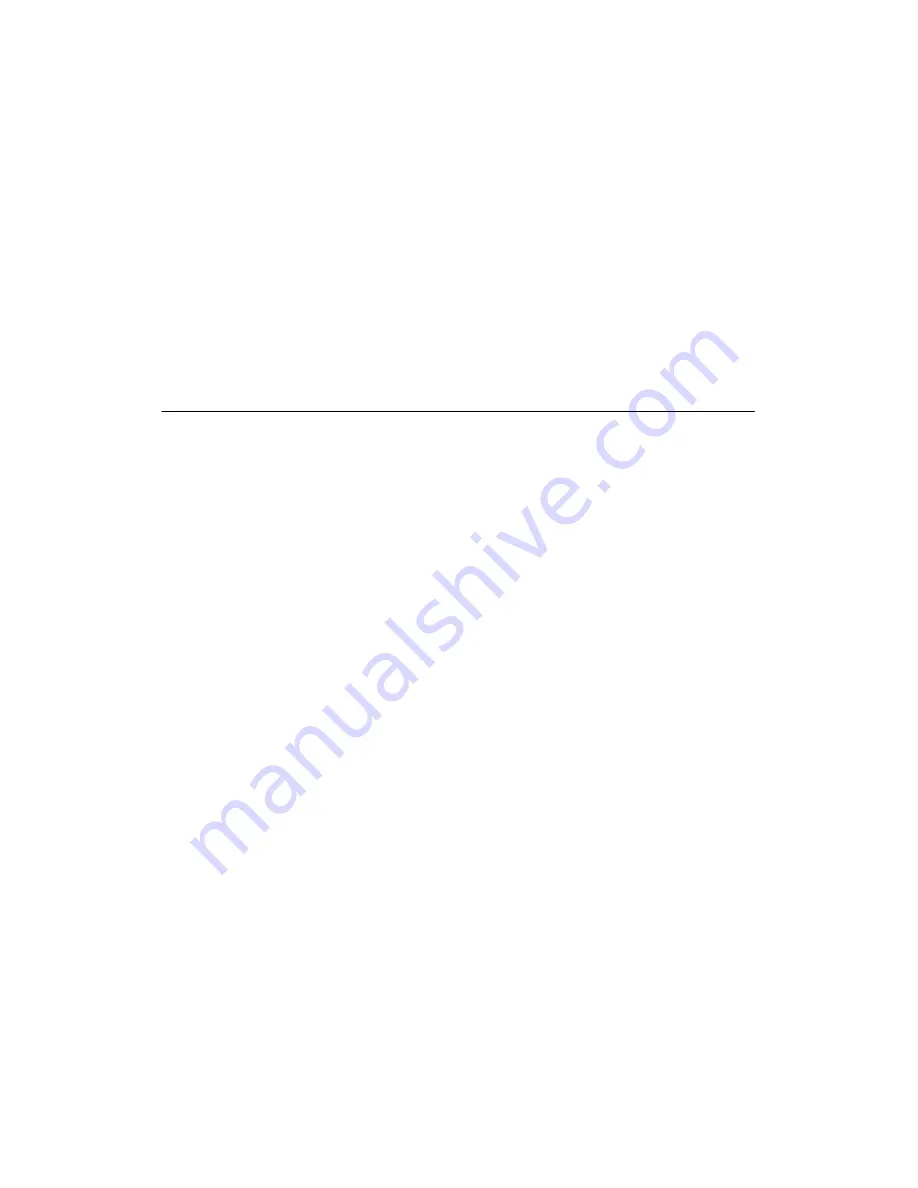
Graphics
4-4
the same as in the Single Density mode. Double horizontal density requires twice the
number of input data bytes to print the same length line as for Single Density. PrintĆ
ing double density reduces the printing speed by half.
D
Control code ESC Y
selects the
Double Speed, Double Density Mode
.
When the Double Density, Double Speed control code is received, the data will be
printed at double the current horizontal dot density, but adjacent dots are not
printed. Since Double Density graphics are printed at half speed, Double Speed,
Double Density graphics are printed at the same speed as are Single Density graphĆ
ics.
D
Control code ESC Z
selects the
Quadruple Density Mode
.
When printing Quadruple Density graphics, the printer pairs adjacent quadruple
density bit image bytes. The compounded data is then printed in the Double Density
mode.
Bit Image Programming Format
The general Bit Image expression is:
ESC CC(n1)(n2)DATA
where:
ESC
=
the Serial Matrix compatible header
CC
=
K, L, Y or Z to select dot density
(K=single, L=double, Y=double-density, double speed
Z=quadruple density)
n1, n2 =
n1 + 256 n2 defines the number of data bytes to follow
DATA =
the dot pattern bytes
D
The syntax of the Bit Image expression must be correct.
D
The expression must include the appropriate dot density control code, the number
of bytes of data to be plotted, and the data itself.
D
The number of data bytes and the n1, n2 definition must be equal.
D
Any characters following n1 and n2 will be interpreted and plotted as data until the
n1, n2 definition is satisfied.
D
If n1 = n2 = 0, then control codes K, L, Y, or Z are ignored.
n2 =
700/256 = 2
n1 =
700-(2x256) = 700-514 = 188
The program statement is: ESC K (188)(2)(DATA)
NOTE: Depending on the host computer system, it may be necessary to include a width
statement within the BASIC program.
D
The maximum number of data bytes that can be included in the DATA portion of the
program statement (when using 132 column paper) varies according to the operating
mode:
Summary of Contents for P9000 Series
Page 1: ...P9000 Series Multifunction Printer User s Reference Manual R...
Page 2: ......
Page 3: ...P9000 Series Multifuction Printer User s Reference Manual R P N 133397 001 Rev B...
Page 12: ...P9012 Multinational User s Reference Manual viii...
Page 18: ...Overview 1 6...
Page 26: ...Operation 2 8 Figure 2 2 Loading Paper...
Page 31: ...2 13 Operation Figure 2 5 Paper Tent Installation Figure 2 6 Paper Stacking...
Page 40: ...Operation 2 22...
Page 43: ...3 3 Configuration Figure 3 1 Sample Configuration Printout...
Page 68: ...Configuration 3 28...
Page 182: ...Routine Service Diagnostics 8 4 Figure 8 2 Cleaning the Paper Motion Detector...
Page 200: ...RibbonMinder 9 14...
Page 230: ...Multinational Character Sets 10 30...
Page 234: ...Installation 11 4 Figure 11 2 Shipping Restraint Removal...
Page 238: ...Installation 11 8...
Page 240: ...P9000 Appendices 10 A 2...
Page 306: ...Appendix C 6...
Page 312: ...Appendix D 6...
Page 322: ...Appendix E 10...
Page 326: ...Appendix F 4 Figure F 2 Removing the DCU PCBA...
Page 333: ......






























